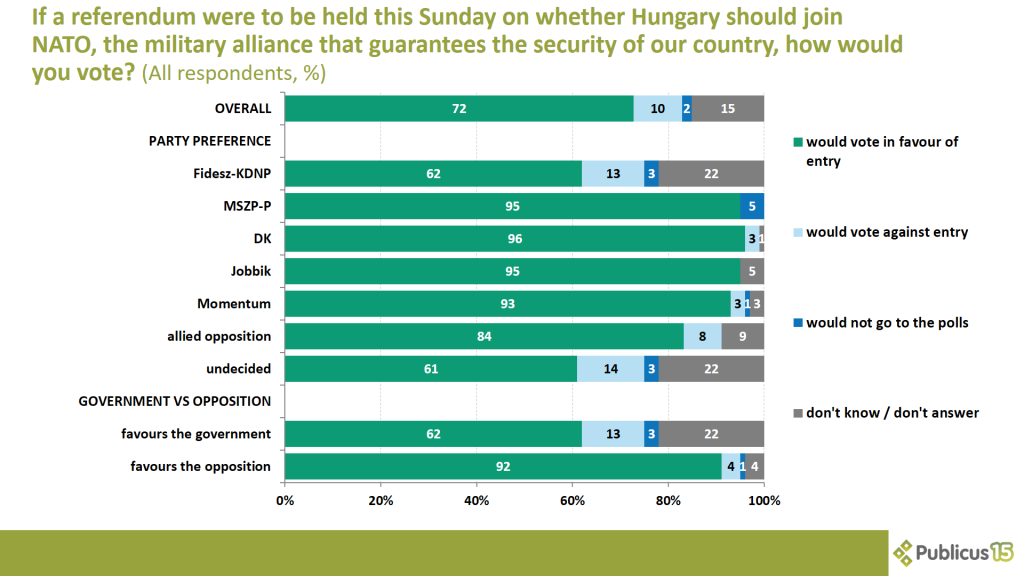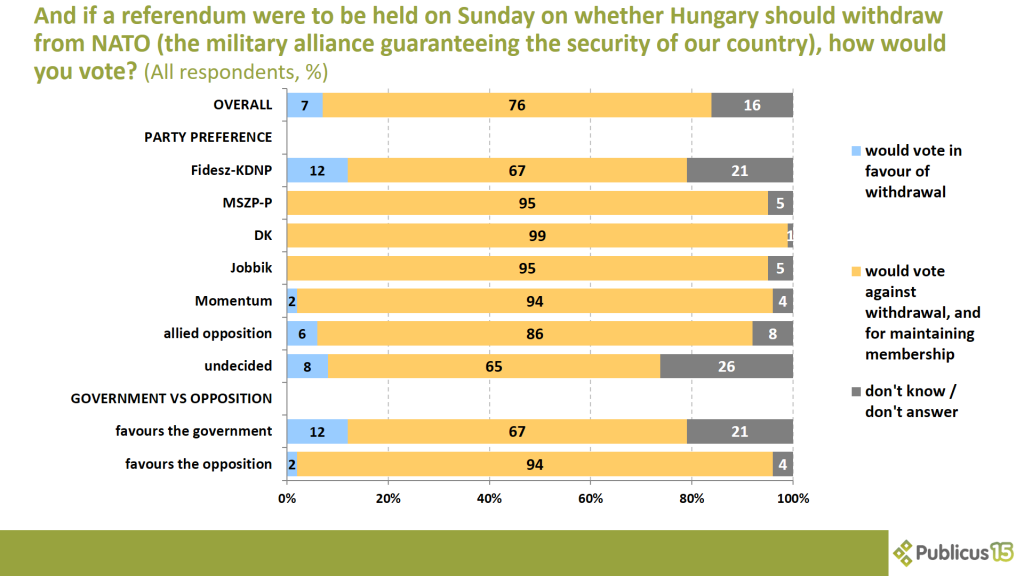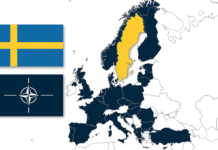Publicus Institute, commissioned by Népszava, measured the public opinion towards Hungary’s NATO membership. The nationwide representative poll conducted between the 3rd and the 9th of February 2022, by surveying 1003 individuals.
If a referendum were to be held on Sunday on whether Hungary should join NATO – the military alliance that guarantees the security of Hungary – seven out of ten (72 percent) respondents would vote in favour. One in ten (10 percent) respondents would vote against the country’s membership, and an additional 2 percent would not go to the polls.
Nine out of ten (92 percent) opposition voters, six out of ten (62 percent) Fidesz voters and also six out of ten (61 percent) undecided voters would vote in favour.
14 percent of undecided voters, 13 percent of Fidesz voters, and 4 percent of opposition voters would vote against Hungary’s NATO membership. 3 percent of both pro-government and undecided voters and 1 percent of opposition voters would not go to the polls.

If a referendum were to be held this Sunday on whether Hungary should withdraw from NATO, three-quarters (76 percent) of the respondents would vote against withdrawal, and for maintaining membership. Almost all opposition voters (94 percent) and nearly two-thirds of Fidesz voters and insecure voters (67 and 65 percent) said the same.
7 percent of respondents would vote for the exit. This was said by 12 percent of Fidesz voters, 8 percent of undecided voters and 2 percent of opposition voters.

Further details on the results of the research can be found in the print and online editions of Népszava. When referring to this research, please also refer to Népszava.
Methodology
The survey was conducted by Publicus Institute, between the 3rd and the 9th of February 2022, polling 1003 individuals via phone, who are representative of the adult population of Hungary. The potential distortions of sampling were corrected with weighting based on the data from the 2016 KSH census data. The attributes of the surveyed accurately resemble those of the Hungarian population by their sex, age, educational attainment, regional and settlement wise composition. With this sample size, we can state with a 95 percent confidence level that the data attained through testing would only differ by +/-3,1 percent at most from that we would have gotten when surveying all 18 year old or older residents. The statistical error is larger however, when the distribution is configured not to all surveyed, but to certain smaller subgroups.














